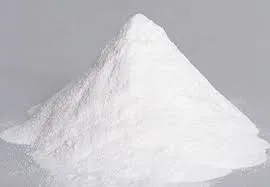
ਅਕਤੂਃ . 15, 2024 10:47 Back to list
Exploring the Applications and Benefits of Hydroxypropyl Methylcellulose in Various Industries
The Versatile Uses of Hydroxypropyl Methylcellulose
Hydroxypropyl methylcellulose (HPMC) is a non-ionic, cellulose-based polymer widely used in various industries due to its unique properties. This semi-synthetic compound is derived from cellulose, a natural polymer found in the cell walls of plants. The modification of cellulose into HPMC enhances its solubility in water, making it an essential ingredient in pharmaceuticals, food production, cosmetics, and construction.
Pharmaceutical Applications
In the pharmaceutical industry, HPMC serves several critical functions. One of its primary uses is as a binder and thickening agent in tablet formulations. It helps in improving the viscosity of the tablet matrix, ensuring uniform distribution of active ingredients. Additionally, HPMC is vital in controlled-release drug formulations. Its gel-forming ability allows for the gradual release of medication, ensuring that patients receive a steady dose over time, improving therapeutic efficacy.
Beyond oral dosage forms, HPMC is also used in ophthalmic solutions and gels. Its high water retention capacity and viscosity make it an effective lubricant and moisturizing agent, providing relief from dry eyes and enhancing comfort during contact lens wear. The versatility of HPMC in drug delivery systems emphasizes its importance in modern pharmaceutical formulations.
Food Industry Uses
HPMC has found significant applications in the food sector. It acts as a food additive, designated as E464 in Europe, and is commonly used in gluten-free products. Its ability to mimic the texture of gluten makes it a valuable ingredient in baked goods, sauces, and dressings, contributing to the desired consistency and mouthfeel.
Moreover, HPMC serves as a fat replacer, allowing manufacturers to reduce calorie content without sacrificing taste or texture. In ice cream and dairy products, it improves creaminess and aids in preventing ice crystal formation, ensuring a smooth and enjoyable texture. The food industry’s increasing demand for healthier options has driven the growth of HPMC’s application as a stabilizer and emulsifier, enhancing product quality and shelf life.
uses of hydroxypropyl methylcellulose

Cosmetic and Personal Care Products
In the cosmetics and personal care industry, HPMC is highly regarded for its thickening and emulsifying properties. It is commonly used in lotions, creams, shampoos, and conditioners, helping to stabilize formulations and improve their texture. As a film-forming agent, HPMC provides a protective barrier on the skin, enhancing moisture retention while giving products a luxurious feel.
Moreover, HPMC is utilized in the production of cosmetics such as mascara and other makeup products. Its film-forming qualities allow for the creation of long-lasting products that adhere well to surfaces. The versatility and stability of HPMC in different cosmetic formulations highlight its crucial role in modern beauty products.
Construction Industry Applications
The construction sector has also embraced the use of HPMC due to its properties as a water-retention agent and thickener. In cementitious applications, HPMC is used in tile adhesives and mortars to improve workability and adhesion. It prevents the quick evaporation of water, allowing for better curing of materials and enhancing the overall durability of constructions.
Additionally, HPMC can improve the flow properties of the mixtures, making them easier to apply and manipulate. The incorporation of HPMC in building materials significantly enhances their performance, leading to better construction quality and longevity.
Conclusion
Hydroxypropyl methylcellulose is an incredibly versatile polymer that has found applications across numerous industries. From pharmaceuticals to food production, cosmetics, and construction, HPMC plays a vital role in improving product quality, performance, and consumer satisfaction. As industries continue to innovate and seek healthier, more sustainable solutions, the importance of HPMC is likely to grow, reflecting its adaptability and essential nature in modern formulations. Its unique properties not only enhance functionality but also contribute to the overall quality of various products, making it a valuable ingredient in today's market.
-
Versatile Hpmc Uses in Different Industries
NewsJun.19,2025
-
Redispersible Powder's Role in Enhancing Durability of Construction Products
NewsJun.19,2025
-
Hydroxyethyl Cellulose Applications Driving Green Industrial Processes
NewsJun.19,2025
-
Exploring Different Redispersible Polymer Powder
NewsJun.19,2025
-
Choosing the Right Mortar Bonding Agent
NewsJun.19,2025
-
Applications and Significance of China Hpmc in Modern Industries
NewsJun.19,2025







